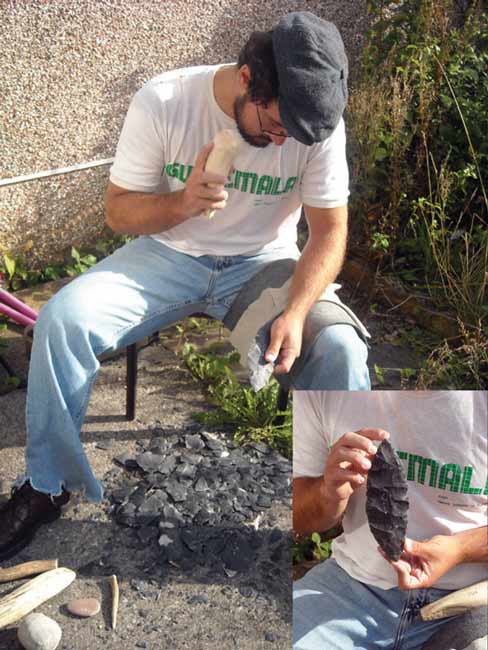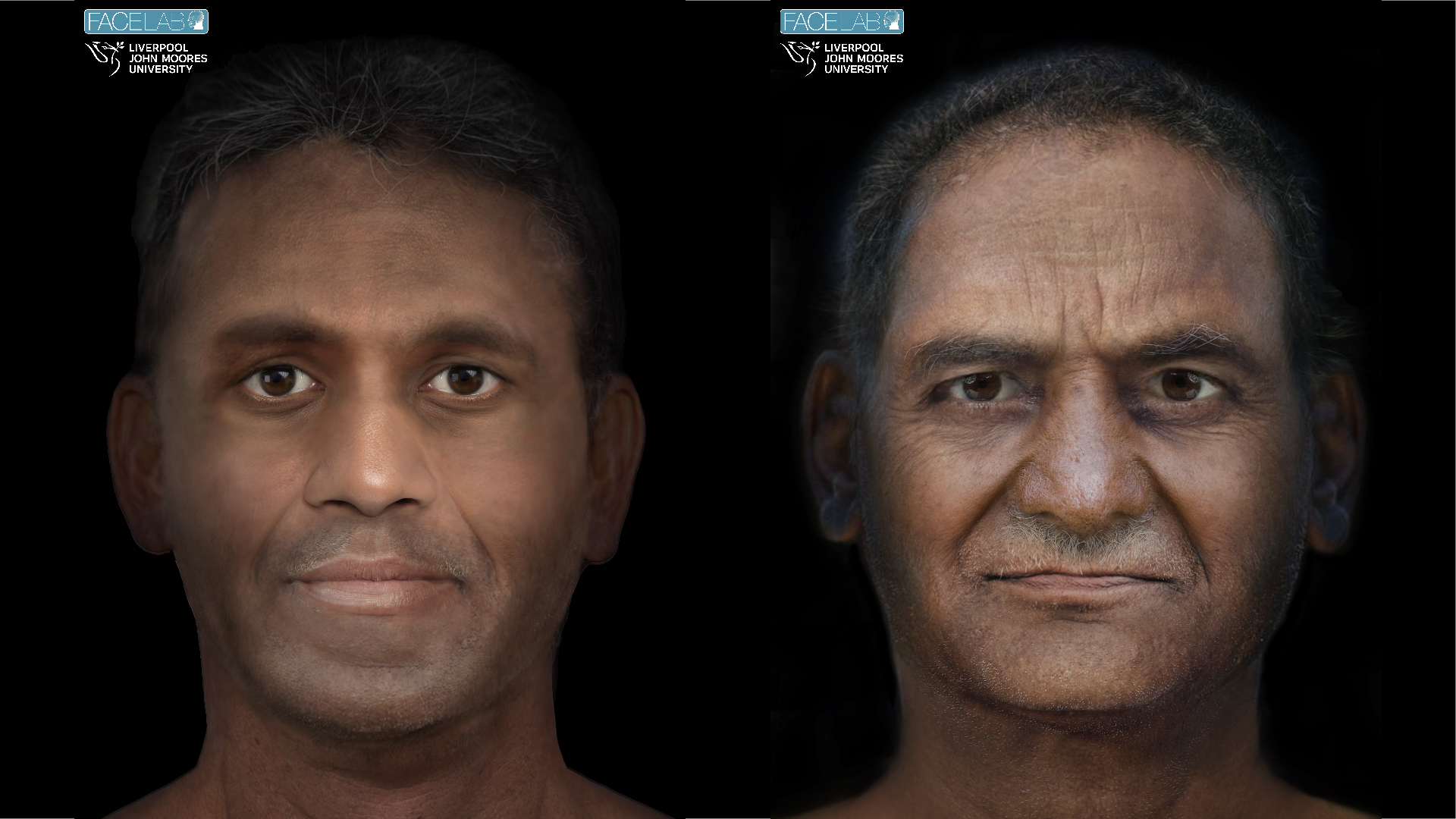Archaeologist Recreates Stone Age Technology

Metin I. Eren is a Ph.D. candidate in Anthropology at Southern Methodist University. His areas of expertise include Stone Age archaeology, human evolution and experimental archaeology. He is an expert flintknapper, which means he can accurately replicate prehistoric stone-tool technology. Through his experimental research and that of his colleagues, researchers have investigated Neanderthal tool efficiency and design; prehistoric bamboo tool production in China; and how animal trampling in India may disturb buried artifacts, potentially biasing subsequent interpretation. His research currently involves how prehistoric humans colonized unfamiliar landscapes. By focusing upon the Pleistocene colonization of the North American Lower Great Lakes region eleven thousand years ago, he is exploring what sort of behaviors and technology people used to successfully adapt to, and eventually settle into, an uncharted Ice Age landscape. Read more about his work here, and his answers to the SceinceLives 10 Questions below.
This ScienceLives article was provided to LiveScience in partnership with the National Science Foundation.
Name: Metin I. ErenAge: 27Institution: Southern Methodist University, Dallas, TXField of Study: Human Evolution and Experimental Archaeology
What inspired you to choose this field of study? Human evolution is the study of us – where our species came from, and where we are going. By studying how we evolved, we can better understand how we fit into nature and how we are connected to it, and to each other. Having the chance to contribute pieces to the human story through scientific practice was simply an opportunity I could not pass up.
Though I started working on archaeological excavations when I was 16 years old, I realized in college that to get a more complete picture of the past I should learn how to make prehistoric tools. By knowing how to make replica tools, experimental archaeologists can conduct tests that otherwise would not be possible to conduct on real (and priceless!) artifacts, such as how well they work for hunting or butchery, or how durable they are when we try to break them. So, over many years I learned the very difficult craft of "flintknapping," which is the process of flaking stone to make tools. Since stone tools make up 99.9 percent of the artifacts we find during the Stone Age, which is the longest archaeological period in our evolution (2.6 million years!), experimental archaeology can contribute many pieces to the study of human evolution, behavior, and technology.
What is the best piece of advice you ever received? I’ve been really fortunate to always be surrounded by people who look out for my well-being, and so it is really hard to pick just one piece of advice. However, there are two quotes that I keep in the back of my mind when it comes to my life and career in science.
(1) From my parents, quoting John F. Kennedy: "To whom much is given, much is expected."
Get the world’s most fascinating discoveries delivered straight to your inbox.
(2) From my Ph.D. advisor, Professor David Meltzer: "Don’t stop pedaling."
What was your first scientific experiment as a child? Though I had been on numerous excavations as a teenager, I did not conduct my first true archaeological "experiment" until my third-year in college. While writing my senior honors thesis it sort of hit me that the method I was using to measure artifacts did not really get at the information I was really interested in. So with the help of my dear friend and colleague Professor Manuel Dominguez-Rodrigo (Complutense University, Spain) I devised an appropriate method which we tested on experimental stone tools. We ended up publishing the new method in a top-tier archaeology journal.
What is your favorite thing about being a researcher? The idea of contributing to knowledge has always inspired me. Being a scientific researcher allows me to do that. I also love to travel and explore - archaeology in particular lets me to do that. Between field work and conferences I have traveled around the world, from the most remote locations to the biggest cities.
What is the most important characteristic a researcher must demonstrate in order to be an effective researcher?The most important characteristic a researcher can demonstrate is the ability to admit s/he might be wrong. If we compare science to football, each generation of scientists is just a team trying to move the football a few yards further down an endless field of discovery. The last thing a football team needs is a player who refuses to give up the football even though s/he is running the wrong way. If research is done honestly and rigorously, there are no "mistakes" in science because a "wrong answer" eventually leads to the correct one - as long as a researcher is willing to change his or her thinking. In other words, if a player is indeed running the wrong way down the field, s/he shouldn’t be afraid or embarrassed to pass the ball to another teammate who may be in better a position to advance the football. In the end, it is the best thing for the team, and everyone wins.
What are the societal benefits of your research?Studying human evolution and prehistoric archaeology allows us to take a "big picture" look at broad and long-term questions, such as how climate change has influenced our evolution, how our species interacts with the environment, or how technology has helped us adapt and survive through time. By looking at the big picture and long-term trends we are better equipped and informed to tackle challenges in modern society.
Researching humanity's past also is important because by studying the countless cultures and behaviors our species adopted through time around the world, one realizes that our species thrives on diversity. Being able to adapt culturally to different circumstances in the natural world (such as the Ice Age) has literally helped us survive to the present day. This highlights the fact that though we all belong to the same species, we are not all meant to share the same beliefs or lifestyles. Thus the study of human evolution is in a very real sense the rejection of prejudiced or racist ideologies and attitudes in the modern world.
Who has had the most influence on your thinking as a researcher? I am still relatively young, and so my thinking is still in the process of "being influenced," so to speak. In many respects I hope I can maintain this quality – I never want to be "set in my ways." My dad, quoting Louis Pasteur, always told me that "chance favors the prepared mind." One way of being prepared is by being open to new ideas and unique ways of thinking. I try to do just that.
What about your field or being a researcher do you think would surprise people the most?I think people would be surprised at the tremendous amount of work a researcher conducts. If I'm not sleeping or eating, I’m generally working. I think there is a perception out there that academics and scientists teach a few hours a week, and then go home. Nothing could be further from the truth. To be successful, a researcher should possess a formidable capacity for work, everyday, all the time.
If you could only rescue one thing from your burning office or lab, what would it be? My colleagues and office mates!
What music do you play most often in your lab or car?Everything from Frank Sinatra to Smashing Pumpkins, from Borodin to Jose Gonzalez. The Killers, Green Day, and Weezer are great when doing lab work late at night. I literally have constructed a laboratory space in my apartment, so I can listen to my music as loud as I want while doing experiments - without bothering anyone in SMU’s Anthropology Department!
Editor's Note: This research was supported by the National Science Foundation (NSF), the federal agency charged with funding basic research and education across all fields of science and engineering. Any opinions, findings, and conclusions or recommendations expressed in this material are those of the author and do not necessarily reflect the views of the National Science Foundation. See the ScienceLives archive.
